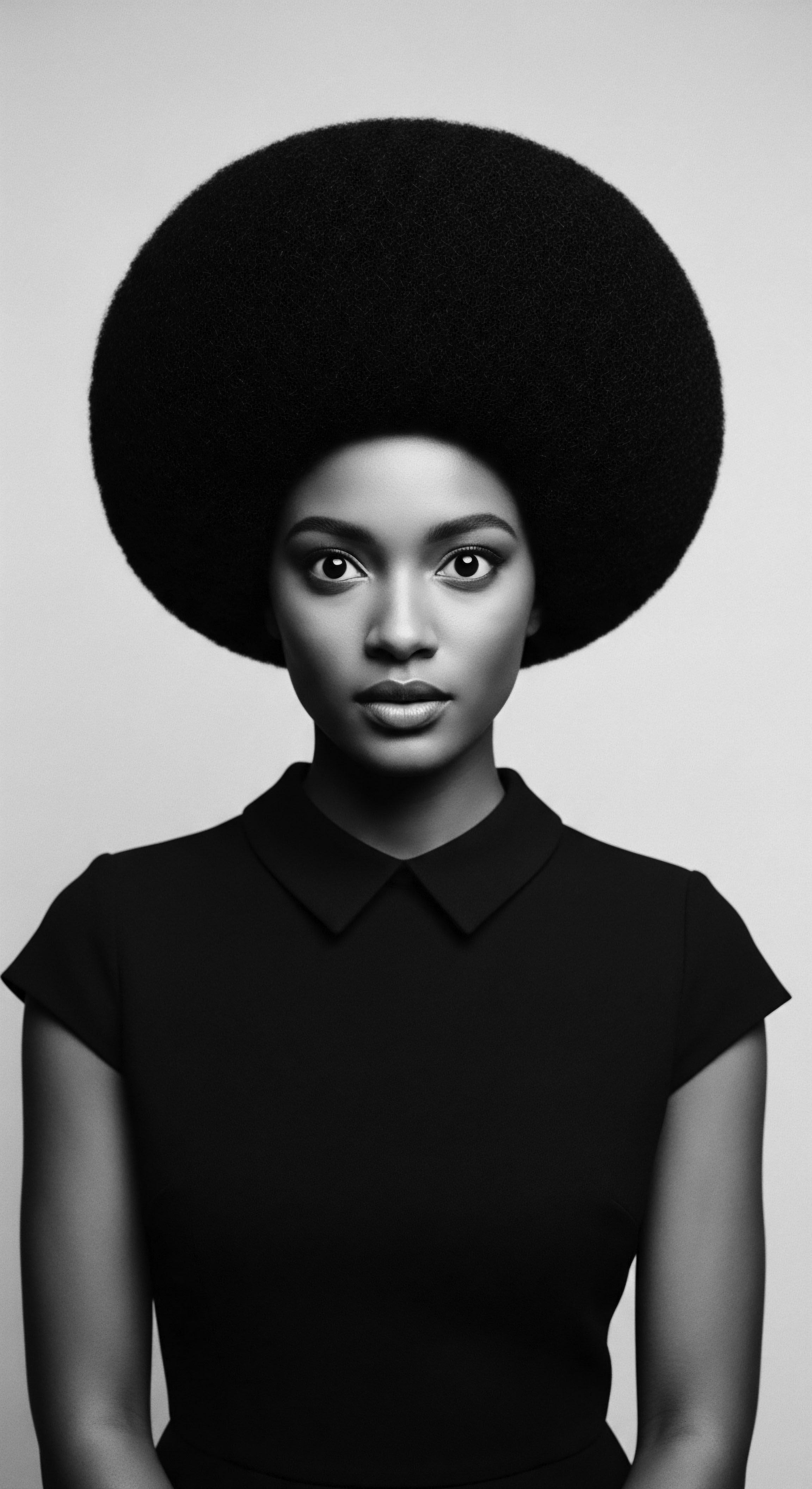
Fundamentals
The concept of Uterine Cancer Risk, at its fundamental level, refers to the probability or likelihood that an individual might develop malignant growth within the uterus, most commonly originating from the lining of the uterus, known as the endometrium. This cellular aberration can disrupt the delicate balance of the female reproductive system, a system deeply intertwined with ancestral understandings of fertility, lineage, and wellbeing. The definition here extends beyond mere biological predisposition; it encompasses the interplay of inherited predispositions, environmental factors, and the profound influence of societal pressures, particularly those that have shaped hair practices across generations for individuals with textured hair.
From the earliest whispers of communal wisdom, communities have sought to understand the forces that guide health and illness. While ancient healing traditions might not have named “uterine cancer risk” with modern medical precision, their holistic view of the body, often connected to the earth and its rhythms, inherently considered factors that contributed to overall vitality and reproductive health. The ancestral reverence for the body’s innate wisdom, for instance, often led to practices that prioritized natural ingredients and gentle care, inadvertently mitigating exposures that contemporary science now identifies as problematic.
The significance of this risk, therefore, is not merely clinical. It holds a deeper sense for Roothea’s ‘living library,’ as it compels us to examine how historical beauty standards and the pursuit of certain aesthetic norms have, perhaps unknowingly, introduced vulnerabilities within the sacred vessel of the body. The fundamental meaning of Uterine Cancer Risk, in this light, is a call to awaken to the hidden costs of conformity and to reclaim the heritage of self-acceptance and natural care that once anchored communities.
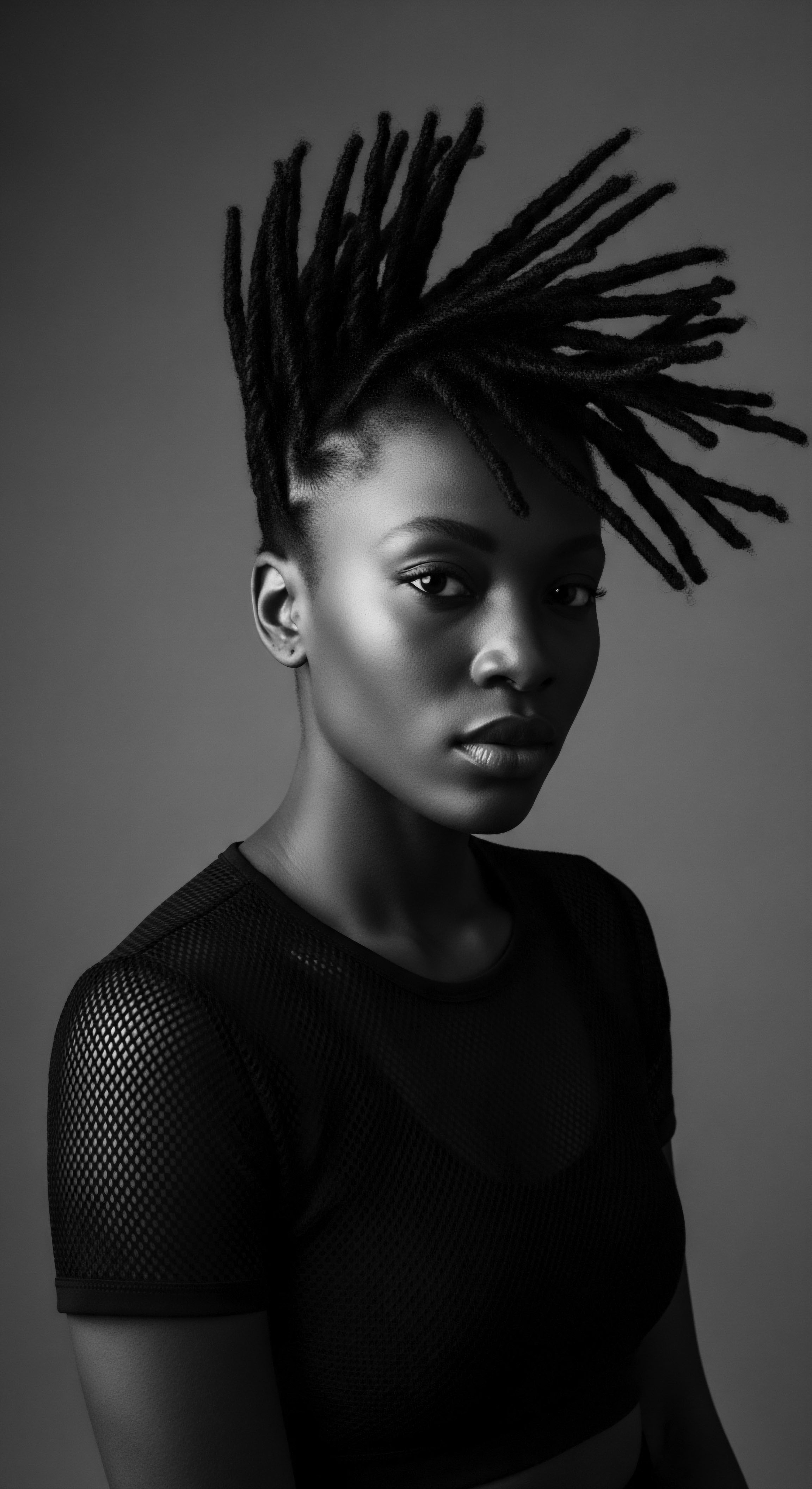
Understanding the Elemental Biology
At its core, uterine cancer arises from uncontrolled cell growth, often driven by hormonal imbalances, particularly prolonged exposure to estrogen without sufficient progesterone to counteract its effects. This elemental biological process, while universal, can be influenced by a myriad of factors. In traditional contexts, a woman’s health was often observed through the lens of her cyclical nature, the ebb and flow of her life stages, and the balance within her physical and spiritual being. Any disruption to this harmony was seen as a deviation from the natural order, prompting interventions rooted in herbal knowledge, dietary adjustments, and community support.
Uterine Cancer Risk, fundamentally, is the probability of developing a uterine malignancy, a concept deepened by the historical context of beauty standards and their impact on textured hair communities.
Consider the ancient understanding of certain plants and their properties. Many ancestral practices involved the judicious use of botanicals to support hormonal equilibrium or cleanse the body. While these practices were not explicitly targeting “cancer,” they contributed to an environment within the body that was less hospitable to abnormal cellular proliferation. This historical perspective invites us to reflect on the wisdom embedded in traditional knowledge systems, which often intuited connections that modern science is only now beginning to quantify.
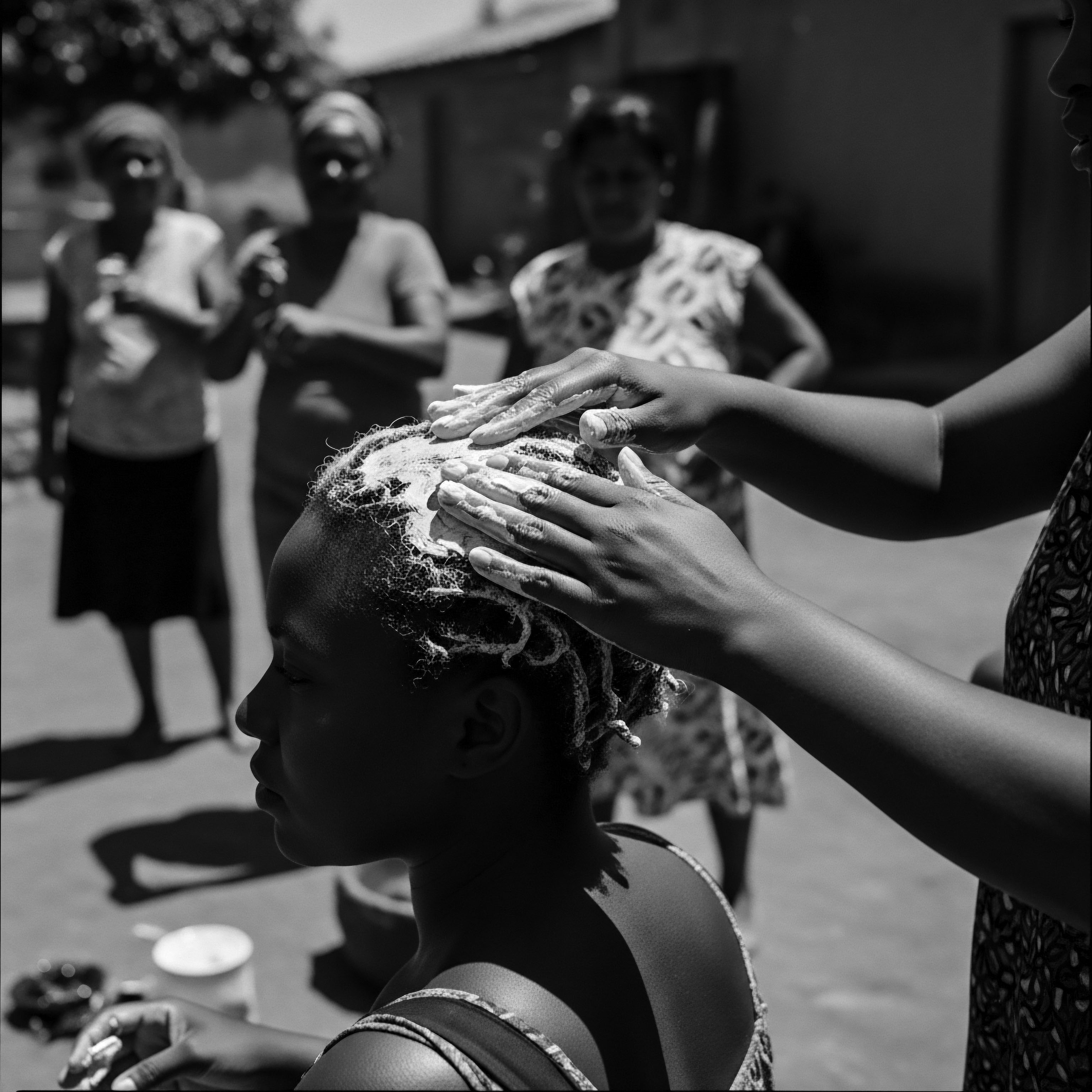
Intermediate
Moving beyond the foundational understanding, the intermediate interpretation of Uterine Cancer Risk within Roothea’s ‘living library’ begins to unravel the layers of influence that shape this health concern, particularly through the lens of textured hair heritage. This level of comprehension acknowledges that the risk is not a solitary biological event, but rather a complex interplay of genetic predispositions, lifestyle choices, and crucially, the enduring legacy of cultural practices and environmental exposures that have disproportionately affected communities with Black and mixed-race hair. The elucidation here recognizes the historical currents that have pushed certain hair care norms, inadvertently creating pathways for potential health vulnerabilities.
The historical context of hair care for Black and mixed-race individuals often reflects a journey through periods of profound pressure to conform to Eurocentric beauty ideals. This societal demand for straightened hair led to the widespread adoption of chemical hair relaxers. These products, while offering a semblance of conformity, contained potent chemicals designed to alter the very structure of the hair strand.
The tender thread of ancestral care, which once favored natural oils and gentle styling, was often supplanted by these harsher treatments, marking a significant shift in the heritage of hair maintenance. The significance of this transition extends beyond aesthetics, reaching into the very wellbeing of the individual.
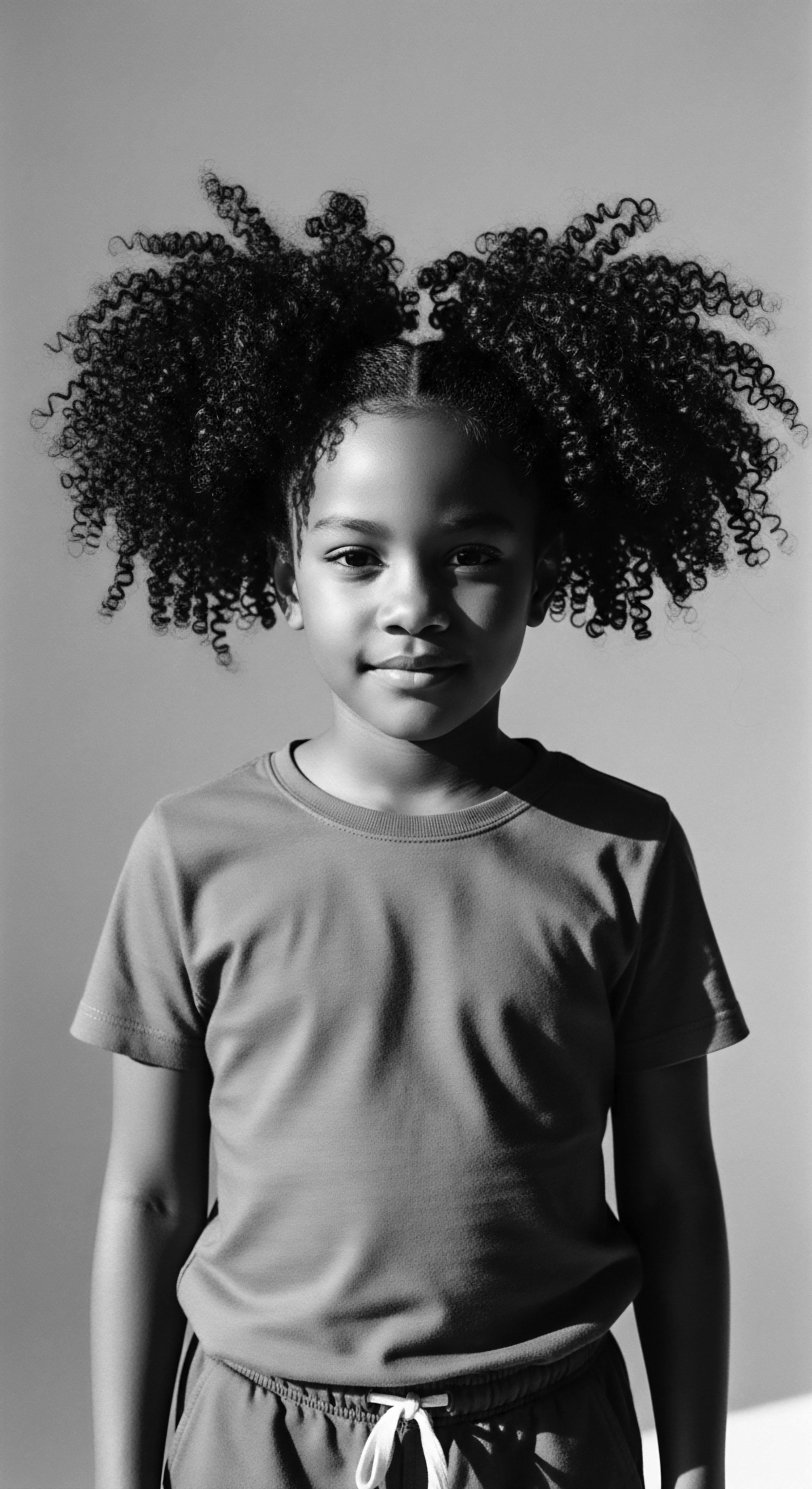
Cultural Pressures and Product Evolution
The history of chemical hair straightening products is a poignant example of how cultural assimilation pressures can intersect with health outcomes. Early formulations were often rudimentary, relying on strong alkaline agents like lye to break down the hair’s disulfide bonds. The desire for acceptance, for access to opportunities, and for safety from judgment often meant enduring scalp burns and discomfort, normalizing a practice that was, at its core, chemically aggressive. This historical context provides a deeper sense of why these products became so deeply embedded in the hair traditions of the diaspora.
Intermediate understanding reveals Uterine Cancer Risk as a confluence of biology, lifestyle, and the indelible mark of cultural hair practices, particularly the historical adoption of chemical relaxers.
The evolution of these products, from harsh lye-based concoctions to “no-lye” alternatives, often brought new chemical compounds into the equation, some of which are now recognized as endocrine-disrupting chemicals (EDCs). These substances can mimic or interfere with the body’s natural hormones, potentially altering the delicate hormonal balance that regulates uterine health. The meaning of “risk” here expands to encompass the cumulative effect of long-term exposure to these agents, absorbed through the scalp, often over decades of use, beginning at a young age for many.
To truly grasp the implications for textured hair heritage, one must consider the frequency and duration of use. Unlike occasional treatments, hair relaxers often necessitate regular application to new growth, leading to chronic exposure. This consistent interaction with potentially harmful chemicals creates a unique exposure profile for individuals who have relied on these products as a cornerstone of their hair care regimen.
- Historical Context of Hair Straightening ❉ The practice of chemically straightening textured hair gained widespread popularity due to societal pressures to conform to Eurocentric beauty standards, particularly in the 20th century.
- Chemical Components ❉ Hair relaxers, both lye and no-lye formulations, have historically contained a range of chemicals, some identified as endocrine disruptors or carcinogens.
- Exposure Pathways ❉ These chemicals can be absorbed through the scalp, especially when irritation or burns occur, creating a direct pathway into the bloodstream.
- Cumulative Exposure ❉ The need for frequent reapplication to new hair growth results in long-term, cumulative exposure, a factor distinguishing this from intermittent product use.
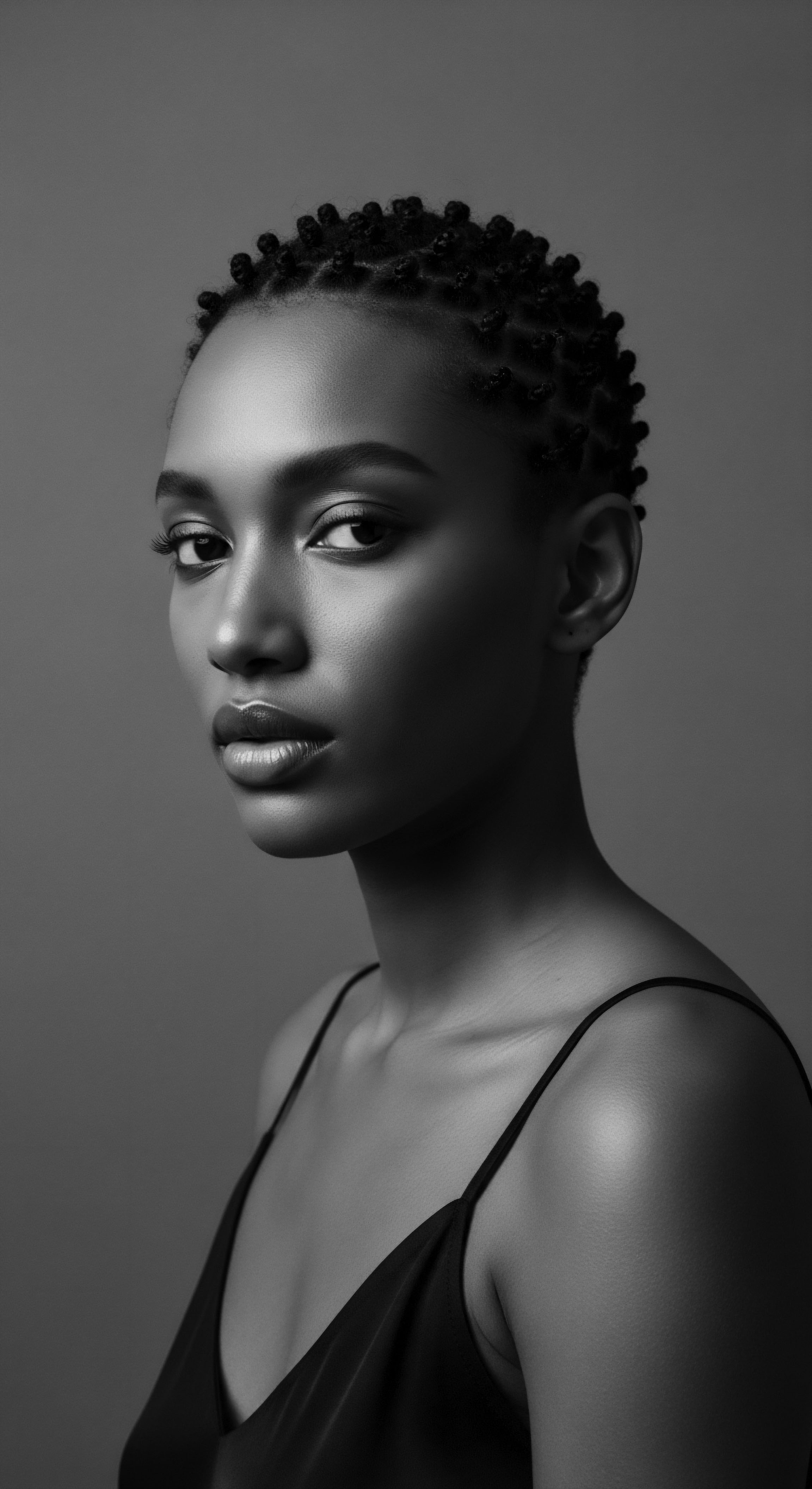
Academic
The academic definition of Uterine Cancer Risk, particularly when viewed through the profound lens of textured hair heritage, transcends a mere clinical probability. It becomes a deeply contextualized interpretation, an elucidation of how elemental biological susceptibilities intersect with complex socio-historical narratives, environmental justice, and the enduring legacy of beauty standards. This scholarly delineation requires a meticulous examination of epidemiological data, biochemical pathways, and the unique cultural experiences that have shaped health disparities within Black and mixed-race communities. The meaning of this risk is thus a layered construct, reflecting not only individual physiology but also systemic influences that have dictated hair practices for generations.
At this advanced level, Uterine Cancer Risk is understood as the statistical likelihood of developing malignant neoplasms within the uterine corpus, primarily endometrial carcinoma, influenced by a confluence of endogenous factors (e.g. hormonal milieu, genetic predispositions) and exogenous exposures. For individuals with textured hair, particularly Black women, this exogenous exposure profile has been historically and uniquely shaped by the widespread use of chemical hair straightening products.
These products, often applied from early childhood and continued throughout life, introduce a spectrum of synthetic compounds, many of which are known or suspected endocrine-disrupting chemicals (EDCs) and carcinogens. The academic inquiry seeks to specify the precise mechanisms by which these chemicals may perturb cellular regulation and hormonal homeostasis, thereby increasing oncogenic potential.
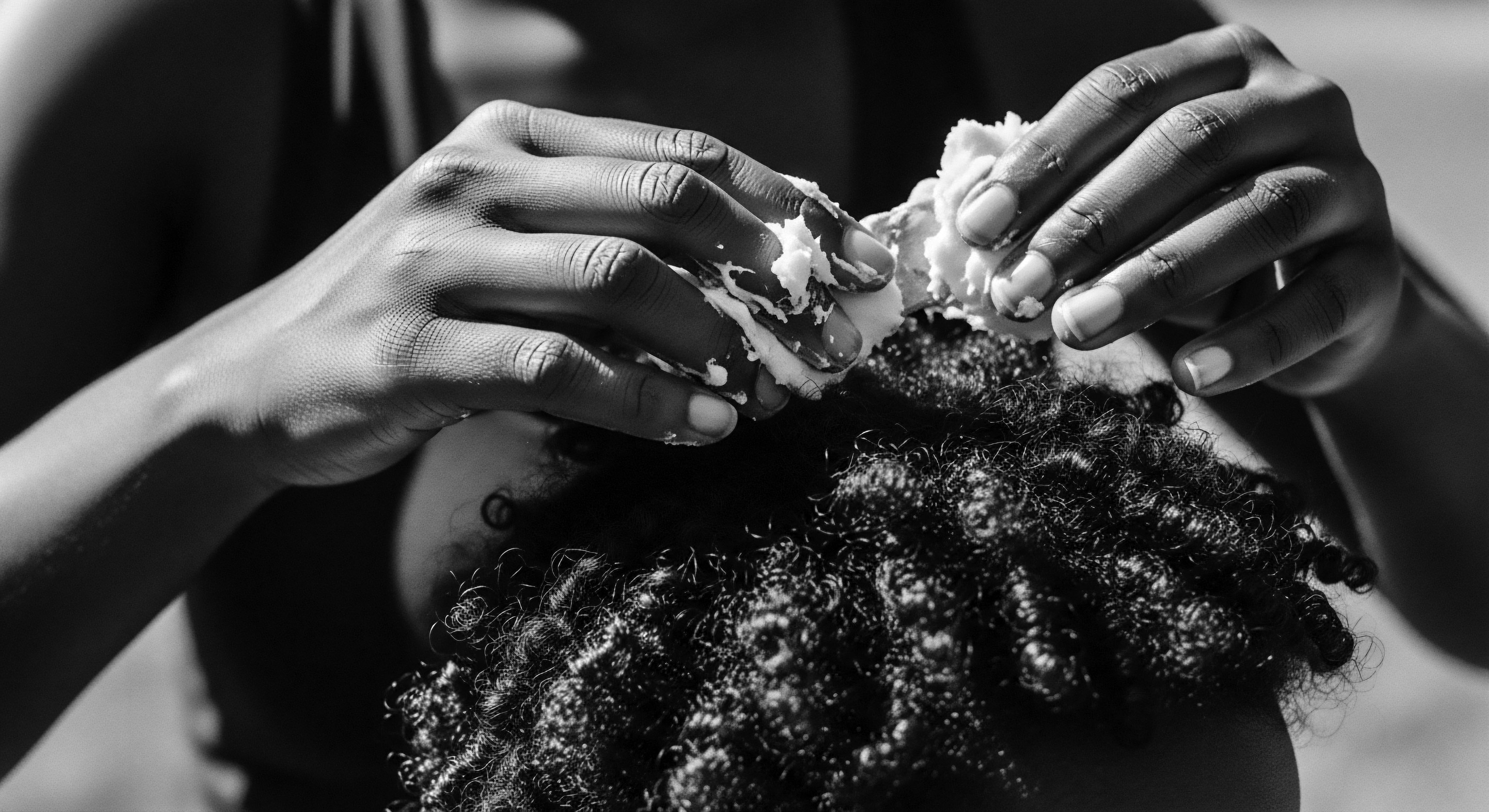
Epidemiological Insights and Chemical Pathways
Recent rigorous epidemiological studies have provided compelling evidence of an association between the frequent use of chemical hair straighteners and an elevated risk of uterine cancer. One such significant contribution stems from the Sister Study, a large prospective cohort led by the National Institute of Environmental Health Sciences (NIEHS), part of the National Institutes of Health (NIH). This comprehensive research, published in the Journal of the National Cancer Institute, followed over 33,000 U.S. women aged 35-74 for nearly 11 years, identifying 378 cases of uterine cancer.
The findings illuminated a striking correlation ❉ women who reported frequent use of hair straightening products, defined as more than four times in the previous year, were more than twice as likely to develop uterine cancer compared to those who did not use these products (Chang et al. 2022). This doubling of risk, while contextualized by the relatively rare incidence of uterine cancer overall, bears profound implications, especially for Black women who comprise a disproportionately large percentage of frequent users.
Academic inquiry into Uterine Cancer Risk for textured hair communities uncovers a complex interplay of biology, socio-historical narratives, and environmental exposures, particularly the long-term impact of chemical hair straighteners.
The underlying biochemical mechanisms are hypothesized to involve the action of specific chemicals found in hair relaxers. These include, but are not limited to, parabens, phthalates (such as diethyl phthalate), formaldehyde-releasing agents, and various metals. These compounds possess characteristics that allow them to interfere with the body’s endocrine system, mimicking or blocking natural hormones, particularly estrogen. Endometrial cancer, the most common type of uterine cancer, is often estrogen-sensitive, meaning its growth can be stimulated by prolonged or unopposed estrogenic activity.
The dermal absorption of these EDCs through the scalp, often exacerbated by chemical burns or abrasions that can occur during relaxer application, provides a direct route into systemic circulation, thereby influencing hormonal balance over time. The long-term consequences of this exposure, initiated often in childhood, paint a compelling picture of a risk factor deeply embedded within a specific cultural practice.
Consider the ancestral practices of hair care that predate the advent of chemical straighteners. These traditions often relied on natural emollients, herbal infusions, and mechanical styling, practices that fostered scalp health and minimized systemic chemical exposure. The shift, driven by a deeply ingrained desire for social mobility and acceptance within a dominant aesthetic paradigm, represents a critical juncture in the heritage of Black hair.
The current rise in uterine cancer incidence, particularly among Black women, compels us to revisit this historical trajectory and critically assess the health costs associated with the deviation from ancestral wisdom. The understanding here is not about condemnation, but about conscientious knowledge and the pursuit of health equity rooted in a deep respect for lived experiences.
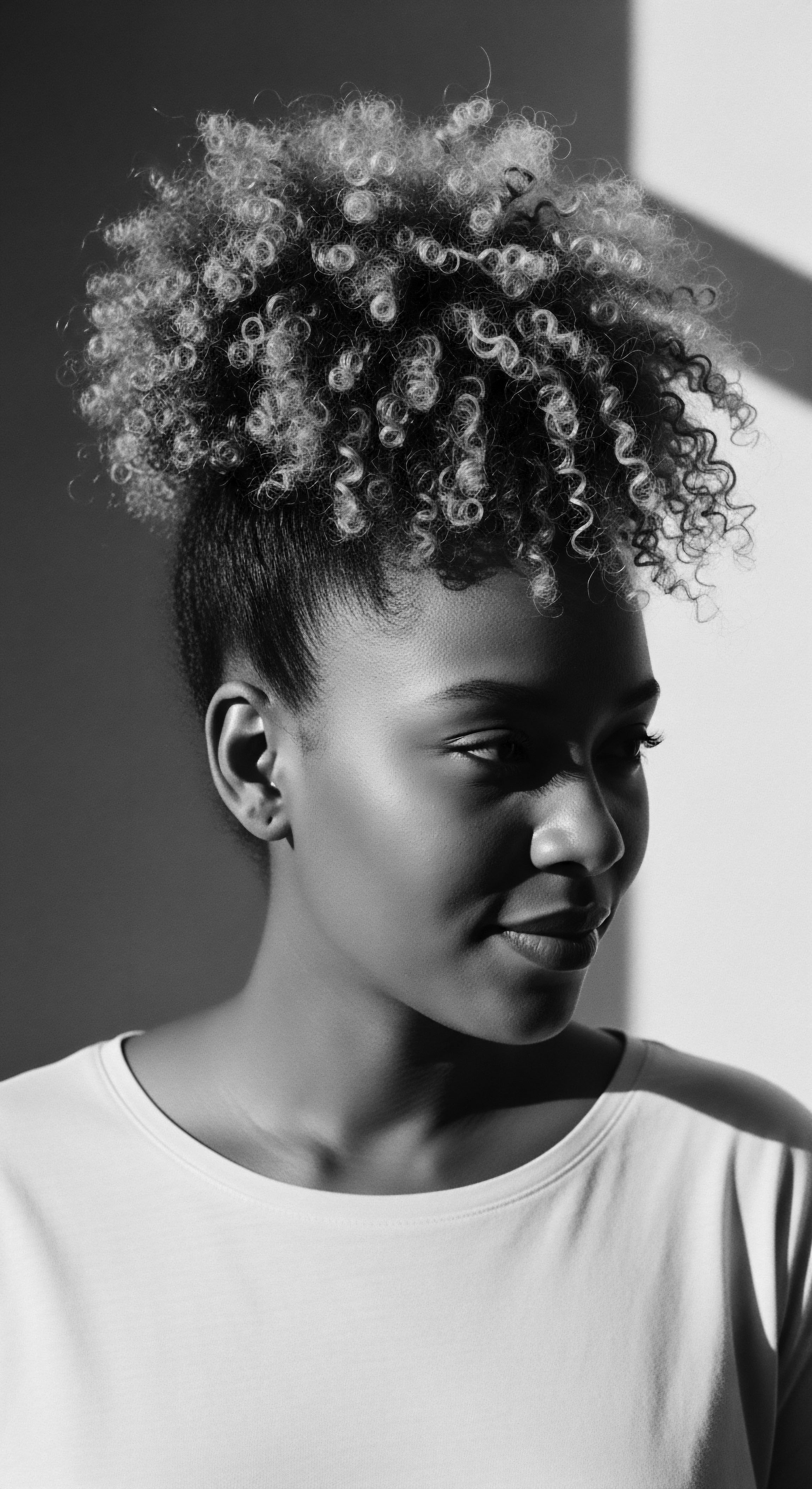
Interconnected Incidences and Disparities
The heightened risk among Black women is not merely a statistical anomaly; it is a critical manifestation of health disparities shaped by social determinants. Historically, Black women have been disproportionately targeted by the marketing of hair straightening products, and their use has been pervasive, often starting at younger ages and continuing with higher frequency compared to other racial and ethnic groups. This prolonged and intensified exposure to EDCs and carcinogens contributes to the observed disparities in uterine cancer rates and outcomes.
Black women face higher rates of aggressive subtypes of uterine cancer and experience nearly twice the mortality rate compared to non-Hispanic white women. This stark reality underscores the urgency of addressing this risk through a lens that encompasses both scientific rigor and cultural sensitivity.
The meaning of Uterine Cancer Risk, in this academic context, thus becomes a powerful statement on environmental justice and the right to health equity. It highlights how the pursuit of a particular aesthetic, influenced by systemic racism and colonial beauty standards, can translate into tangible health burdens for marginalized communities. This analysis calls for a re-evaluation of product safety regulations, an increased investment in research that centers the experiences of diverse populations, and a broader cultural conversation that celebrates the natural heritage of textured hair without imposing harmful chemical interventions.
To fully comprehend the ramifications, one must also consider the socioeconomic factors that often accompany prolonged relaxer use. Access to healthier, natural hair care alternatives, or the time and resources required to maintain natural hair textures, can be limited for many. This further entrenches the reliance on chemical straighteners, creating a cycle where historical beauty pressures perpetuate health vulnerabilities. The expert-level analysis here demands a holistic perspective, one that connects cellular biology to social structures, and individual health outcomes to collective historical experiences.
| Era/Practice Pre-Colonial & Early Diaspora |
| Description within Heritage Ancestral practices focused on scalp health, protective styling, and natural emollients like shea butter, palm oil, and various herbal infusions. Hair was often adorned and seen as a spiritual connection to lineage. |
| Potential Uterine Health Link (Academic Perspective) Minimal direct exposure to exogenous endocrine disruptors. Practices likely supported overall bodily harmony, potentially contributing to a lower baseline risk of hormonally-driven conditions. |
| Era/Practice Late 19th – Mid 20th Century (Press & Curl) |
| Description within Heritage The advent of hot combs and pressing oils for temporary straightening. While not chemical, the heat could cause scalp burns, potentially increasing absorption if chemical agents were later applied. |
| Potential Uterine Health Link (Academic Perspective) Indirect link; scalp irritation could create pathways for chemical absorption from other products, but direct endocrine disruption from this method was less likely. |
| Era/Practice Mid 20th Century – Present (Chemical Relaxers) |
| Description within Heritage Widespread adoption of lye and no-lye chemical relaxers to achieve permanent straightness, driven by socio-economic pressures for conformity. Often started in childhood. |
| Potential Uterine Health Link (Academic Perspective) Direct association with increased uterine cancer risk due to chronic exposure to endocrine-disrupting chemicals (EDCs) like phthalates, parabens, and formaldehyde-releasing agents, absorbed through the scalp and influencing hormonal balance. |
| Era/Practice The evolution of hair practices reveals a shift from ancestral methods, which implicitly supported wellbeing, to modern chemical interventions with documented health implications, particularly for uterine health. |

Reflection on the Heritage of Uterine Cancer Risk
As we draw breath from the dense foliage of scientific inquiry and historical revelation, the meaning of Uterine Cancer Risk transforms from a mere medical term into a resonant echo within the Soul of a Strand. This journey through its definition, from elemental biology to academic depth, ultimately circles back to the tender, resilient heritage of textured hair. It is a profound meditation on the paths trod by our ancestors, the choices made in the crucible of societal expectation, and the wisdom we are now called to reclaim for our collective wellbeing. The understanding of this risk is not a burden, but a vital piece of ancestral knowledge, illuminated by contemporary insights.
The narrative of Uterine Cancer Risk, particularly for Black and mixed-race women, is interwoven with the very fibers of their hair. It speaks to generations who navigated a world that often demanded a reshaping of their natural crowns to fit narrow ideals. The chemical relaxers, once symbols of assimilation and opportunity, now stand as poignant reminders of the hidden tolls extracted by such pressures.
Yet, within this acknowledgment, there is no room for judgment, only for a compassionate understanding of the complex forces that shaped these choices. It is a call to honor the resilience that allowed communities to persist and thrive, even as they adapted to challenging circumstances.
The tender thread of care, passed down through matriarchal lines, has always sought to protect and adorn. Now, this thread asks us to listen more intently to the whispers of our bodies, to the wisdom of our heritage, and to the clear voice of scientific discovery. The revelations about chemical exposures compel us to re-evaluate what true “care” entails, moving beyond superficial aesthetics to embrace practices that safeguard our inner vitality. This reflection encourages a return to the source, to the ingredients that nurtured, rather than altered, the inherent beauty of our hair.
The understanding of Uterine Cancer Risk, viewed through the lens of textured hair heritage, is a poignant reflection on ancestral paths, societal pressures, and the imperative to reclaim holistic wellbeing for future generations.
The unbound helix of textured hair, in its glorious diversity, stands as a testament to identity, resistance, and inherent beauty. As we gain a clearer understanding of Uterine Cancer Risk, we are empowered to make choices that align with a vision of health that is deeply rooted in self-acceptance and ancestral reverence. This means celebrating every coil, curl, and wave, not as something to be tamed or altered, but as a sacred extension of self. It signifies a conscious turning away from products that compromise wellbeing, towards those that nourish and protect.
The future of textured hair care, illuminated by this profound understanding, is one where beauty and health are inextricably linked, honoring the legacy of those who came before, and safeguarding the generations yet to come. It is a powerful affirmation of our right to flourish, in body and spirit, with our heritage shining brightly.

References
- Chang, C. J. White, A. J. O’Brien, K. M. Keil, A. P. Gaston, S. A. Jackson, C. L. & Sandler, D. P. (2022). Use of Hair Products in Relation to Uterine Cancer Risk. Journal of the National Cancer Institute, 114(12), 1632-1638.
- Bertrand, K. A. Zota, A. R. & Palmer, J. R. (2023). Hair relaxer use and risk of uterine cancer in the Black Women’s Health Study. Environmental Research, 239(Pt 1), 117228.
- White, A. J. Sandler, D. P. Jackson, C. L. & O’Brien, K. M. (2021). Hair product use and breast cancer risk in the Sister Study. International Journal of Cancer, 149(12), 1989-1999.
- Helm, J. S. Nishioka, M. Brody, J. G. Rudel, R. A. & Dodson, R. E. (2018). Measurement of endocrine disrupting and asthma-associated chemicals in hair products used by Black women. Environmental Research, 165, 448-458.
- James-Todd, T. & Terry, K. L. (2019). Hair care product use and breast cancer risk in the Black Women’s Health Study. Carcinogenesis, 40(10), 1239-1247.
- Adana, S. & Taylor, S. C. (2020). Hair care practices and beliefs among African American women. Journal of the American Academy of Dermatology, 83(6), 1801-1806.
- Quigley, J. & Walker, M. (2019). The History of Black Hair ❉ From the African Roots to the Global Stage. Routledge.
- Byrd, A. D. & Tharps, L. D. (2014). Hair Story ❉ Untangling the Roots of Black Hair in America. St. Martin’s Press.
